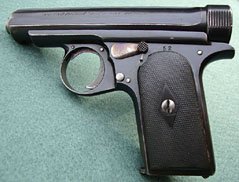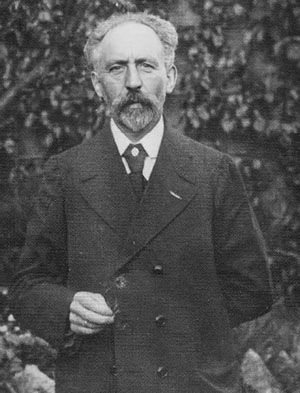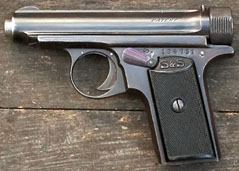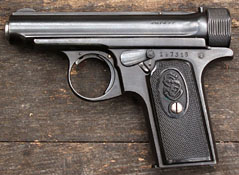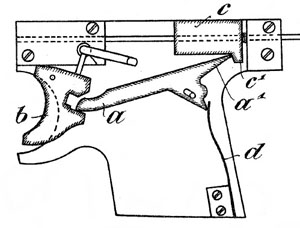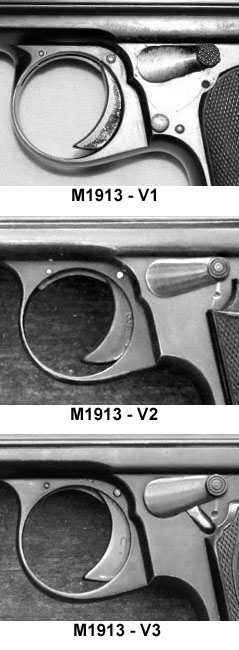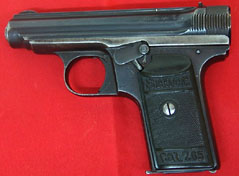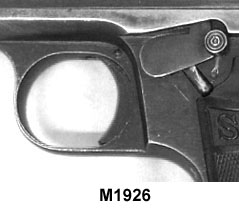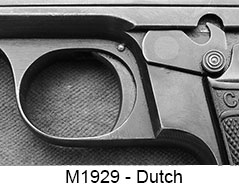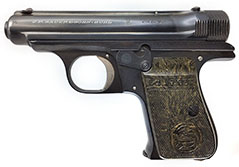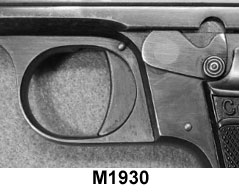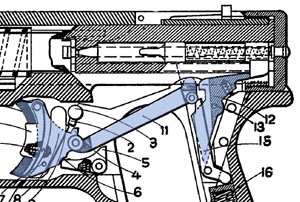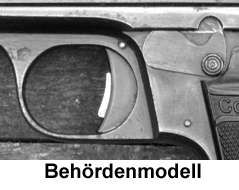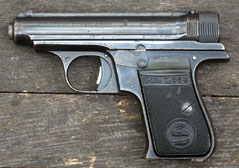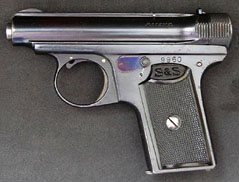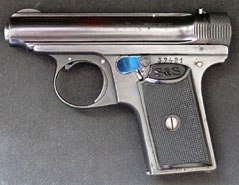 |
||||||||||||||||||||||||||||||||||||||||||||||||||||||||||||||||||||||||||||||||||||||||||||||||||||||||||||||||||||||||||||||||||||||||||||||||||||||||||||||||||||||||||||||||||||||||||||||||||||||||||||||||||||||||||||||||||||||||||||||||||||||||||||
 |
||||||||||||||||||||||||||||||||||||||||||||||||||||||||||||||||||||||||||||||||||||||||||||||||||||||||||||||||||||||||||||||||||||||||||||||||||||||||||||||||||||||||||||||||||||||||||||||||||||||||||||||||||||||||||||||||||||||||||||||||||||||||||||
|
Sauer Model by Ed Buffaloe and Dr. Stefan Klein
The city of Suhl was first mentioned in documents in the year 1318. It is located in Thuringia, Germany, and is famous for its long tradition of weapon manufacturing. Firearms were first produced there around 1500. It is reported that in the beginning of the 17th century the SAUER family moved from Nuremberg to Suhl and founded their gunsmith business. The family has continued to work in Suhl ever since. Johann Paul Sauer was born in 1720 and started his gun business in 1751, making it the oldest gunmaking firm in Germany. J. P. Sauer, Jr. was born circa 1755, and his son Franz Sauer was born circa 1790. Franz had 2 sons, Rudolf (born circa 1839) and Franz Jr. (born 1840). Franz Jr. had 2 sons: Hans (born 1875) was a former technical director and died in the Sachsenhausen prison camp in early 1945. Rolf (Rudolf) was born in September 1882 and died in January 1972. He was the former sales director of the firm in Suhl. Rolf had 3 children: Franz Joachim, Gisela, and Dietrich Rudolf. In 1811 Sauer became the first company ever to produce firearms for the German military. Because of this, a new facility was begun in 1837 and completed a year later. By 1858 two hundred people were employed by Sauer. During the wars of 1864-66 as well as 1870-71 the production of military rifles was increasingly important, and another new facility was completed prior to 1871 when Sauer was called upon to help Mauser produce the Modell 71 military rifle. Later the gun was modified and designated the Model 71/84. In 1880 Sauer & Sohn also began production of high quality hunting rifles, which became well known very quickly and are still highly sought-after today.
By 1900, Sauer & Sohn had also gained considerable experience in revolver manufacture, having received two revolver contracts, in conjunction with C.G. Haenel in the first instance and with V.C .Schilling in the second. These pistols were known as the Reichs revolvers. But with the growing market for self-loading pistols, Sauer had to catch up. First they produced the Bär-Pistol under license from Burkhard Behr. It is a double barrel pistol having a flat rotating block with four chambers. By pulling the trigger the first two rounds can be fired, after which the block must be turned manually before the next two rounds can be fired.
With a preparation time of two years the first Sauer self-loading pistol in .32 ACP was released in 1913. According to Cate & Krause, all of the Sauer & Sohn self-loading pistols were designed by Fritz Zehner, the company’s chief engineer, who had participated in the design of the Roth-Sauer. The Model 1913 was of very high quality manufacture and gained an early reputation for reliability. During the production period from 1913 to 1929 the gun was modified twice (see below for details). In 1920 Sauer introduced a 6.35mm (.25 ACP) version of the Model 1913 which was designated the Model 1919. Three variants of the Model 1919 are known. In 1926 Sauer introduced the Model 1926 Export pistol, which was an improved Model 13. The Model 1926 was finished quite beautifully and the majority were exported to the U.S. Only a few thousand were made, making it a very desirable pistol. Due to competition from the Walther Model 8 and Model 9, Sauer was also forced to produce vest pocket pistols, which are known as the Model 1920, 1928 and 1933. These models are not covered in this article.
This article will focus on the Model 1913 and its successors, the Models 1919, Model 1926 (which is a variant of the Model 1913), the Model 1930 and the Behördenmodell 1930. Related Patents and Utility Models Fritz Zehner filed numerous patents and utility models for the Model 1913 and its successors, all registered in the company name.
There were five Gebrauchsmuster (DRGM) utility models filed for the Model 13, as follows:
Chief designer Fritz Zehner may have been influenced by the design of the Savage Pistol, which can be recognized in the overall shape of the Model 1913 and in its concentric recoil spring and separate breech block assembly. However the Sauer is a totally different gun, with a fixed barrel and unique lockwork. The Model 1913 guns, all the way through to the 1930 Behördenmodel, have a tubular slide, the forward portion of which encloses a fixed barrel with a concentric recoil spring. A separate breech block fits into the rear of the tube and is held in place by screw cap. The vast majority of the Model 1913 display the following slide inscriptions in italic capital letters. Right or left side: CAL. 7,65 However, there were variations. Through at least serial number 4282, guns intended for export to English-speaking countries were marked on top of the slide: J.P. SAUER & SON, SUHL, PRUSSIA. The serial number of the Model 1913 is stamped on the left side of the frame above the grip plate. The earliest grips are of checkered horn, with a diamond in the center where the grip screw is located. This style soon gave way to hard rubber grips with the S&S monogram in an oval at the top. Later grips were made of bakelite and show a stylized S&S monogram in an oval in the center of the plates. The grip plates are held on by crossbars at the back, so that one need only turn the grip screw 90° to remove the plate (similar to the Model 1900 FN Browning). Magazine capacity is seven rounds. The magazine has two cut-outs on each side and has the inscription “S&S. 7,65” on the bottom of the left side. Later magazines have the same cut-outs but have an inscription at the bottom of the magazine which reads “S&S. Cal. 7,65.”
There are three known variants of the Model 1913 with only minor differences. Model 1913, Variant 1 – serial number 1 – 5000, with some transitional pistols noted in the 5000 to 8700 range.
Disconnection is accomplished through the design of the trigger and transfer bar interface. The trigger is essentially disconnected from the transfer bar as soon as the gun is fired. The transfer bar rides up over the top of a projection on the rear of the trigger when there is no forward tension from the striker spring, leaving the trigger slack. The slide latch is located in the upper part of the trigger guard, and is an extension of the trigger, such that if the slide is locked open one need only pull the trigger to release the slide. The fixed barrel has a two-pronged cartridge guide protruding from the top of the chamber. Most first variant guns do not have a separate rear sight as do later variants. Instead the breech block screw cap has a V- shaped notch which serves as the rear sight. The screw cap is secured in position by a spring-loaded pin built into rear of the breech block, which fits into a hole in the back of the cap when it is screwed all the way in. The cap has serrations on its sides; the serrations do not extend onto the slide of the pistol. Somewhere near serial number 4991 a separate rear sight was added in the form of a flat spring with the sight on the end, which also serves to hold the rear cap in position. Some earlier guns were converted to the new rear sight arrangement, and may still have the original screw cap with the groove and hole in the rear.
The early guns have no markings for the safety lever positions. Down is the safe position. The thumb grip portion of the safety lever is checkered. The grip plates are plain checkered hard rubber, squared at the bottom and rounded at the top, with only a tiny half-moon cutout for the safety lever on the left side. Like the 1900 Browning, the magazine is released by squeezing the magazine release on the bottom of the grip toward the front of the gun, rather than to the rear. Transitional pistols have the old frame with the magazine safety button, but have the new slide with the flat spring rear sight (described below) and the new style grips. Model 1913, Variant 2 – serial number approximately 5000 (with transitional pistols noted in the 5000 to 8700 range) – 134000 approximately The magazine safety was eliminated and the rear sight was improved. Instead of the V-shaped notch the gun has a flat spring on top, the rear portion of which forms the rear sight and also secures the breech cap. (This flat spring latch and sight is reminiscent of the sight for the Bär pistol, which also served as the release for the rotating block. The hole in the rear of the screw cap is eliminated. The gun continues to have serrations only on the sides of the screw cap, and not on the slide. There is an “S” beneath the safety lever to indicate the gun is safe when the lever is down. The thumb grip portion of the safety lever has circular grooves through at least serial number 32121. The circular grooves are replaced by checkering by at least serial number 32482. The hard rubber grip plates are only slightly rounded at the top, with a distinct cutout at the upper left corner to accommodate the motion of the manual safety lever, and the S&S monogram in an elongated oval at the top. Model 1913, Variant 3 – serial number 90000 – 160900 approximately The efficacy of safety levers on automatic pistols was becoming a topic of discussion in this time-period. Since the safety lever on the earlier 1913 Sauer pistols only blocked the trigger, if the gun were dropped inertial motion could still cause the gun to fire. Sauer decided to address this problem by placing an additional spring-loaded lever beneath the existing manual safety lever. When the safety lever is moved down, it presses the additional lever into a slot cut in the left side of the transfer bar/sear, effectively locking it. Now, if the gun is dropped, it cannot fire. This was called the Zusatzsicherung, which means “additional safety.” Some of the guns between serial numbers 128500 and 130800 are marked in English for export. The hard rubber grip plates are again only slightly rounded at the top. The S&S monogram is now in a vertical oval filling the upper half of the grip plate. Please note that Sauer continued to make (or at least assemble) varian 2 guns without the Zusatzsicherung until approximately serial number 134000. Model 1926 (Export Modell) – serial number 161000 – 171400 approximately
Model 1929 Dutch The Model 1929 is essentially a Model 1930 with a few changes that were requested by the Dutch police and military (see the Model 1930 below for its design features). The Dutch police specifically requested that the trigger for their guns retain the functionality of the Model 1913, wherein the trigger remains flat in the back of the trigger guard until the gun is cocked, when it springs forward, so the gun uses the earlier lockwork. The safety lever has a distinct hook on it. The Dutch pistols also have a cocking indicator on the back of the gun--a small pin protrudes from the center of the end cap when the gun is cocked. The Dutch police also required an extra screw and coil spring at the bottom of the rear grip-strap, to put additional pressure on the magazine latch; this feature is seen only on the late guns. Early guns are marked JOH.MUNTS - AMSTERDAM on the left side of the slide and J.P.SAUER&SOHN,SUHL on top. Johan Munts was the Dutch importer. Munts was probably the largest gun dealer in Holland, and virtually all Dutch Sauer pistols when through his hands.
Behördenmodell – serial number 200700 - approximately 232000
Early versions of the Behördenmodell have a breech block almost identical with that of the Model 1913, but with a single-prong fixed cartridge guide on top (instead of double prong) to help guide the cartridge into the chamber. The patent drawing for the Behördenmodell shows a cocking indicator--we suspect the early guns had the cocking indicator, but that it was eliminated when the cartridge guide was redesigned. Please write to us if you can verify this.* Later versions have a moveable cartridge guide in the breech block. Two different shapes of moveable cartridge guide were used,
Early Behördenmodell pistols have the same polished slide with the inscription on top as the Model 1913, but later the top of the frame is lightly grooved to reduce glare, and hence the top inscrition is moved to the left side of the slide. There are a few aluminium frame and slide models known; we have noted several stamped on the right or left side ORIGINAL DURALUMIN. The two variations of this model are anodized (black) and non-annodized (brightly polished) Duralumin. These few pistols represent one of the rarest variations of all Sauer production pistols. The Behördenmodell 1930 can be found up to serial number 230000 (highest number known 227700). Between 225744 and 230796 there was a production gap. After 220000 some Behördenmodell 1930 can be found without the trigger safety. These late guns are somewhat similar to the Model 1930 but have the separate sear as well as the loaded chamber indicator.
6.35mm Sauer Pistols
Model 1919, Variant 1 – serial number 1-30200 This model looks like and has the same features as the Model 1913 Variant 2, but is downsized and is chambered for the 6.35mm Browning cartridge (.25 caliber ACP). Unlike the
Model 1913, the serrations continue from the grip cap onto the rear of the slide. The bakelite grips feature the S&S monogram in an oval at the top. The grip plates are held on by crossbars at
the back, so that one need only turn the grip screw 90° to remove the plate. The magazine has two cut-outs on each side and has the inscription “S&S. 6,35” at the bottom of the left side
. Some of these guns are known to have had their inscriptions in English: Model 1919, Variant 2 – serial number 30200 – 43000 Like the Model 1913, Variant 3, this model was improved with an additional safety (Zusatzsicherung) which blocks the trigger bar. Model 1919, Variant 3 – serial number 43000 – 65000 In 1926 the safety lever was equipped with a nose which is used to lock the slide in its rear position, identical to the Model 1926. The slide catch in the top of the trigger guard is eliminated and the shape of the trigger guard is changed. The bakelite grips feature a larger S&S monogram in a vertical oval.
Usage and Evaluation Gerhard Bock, in the 1923 edition of his book Moderne Faustfeuerwaffen und ihr Gebrauch, states that the Sauer & Sohn pistol which was introduced 1913 has a remarkable design, dimensions, quality, reliability and safety and that it is highly competitive with all other available .32 caliber pistols. The Model 1913 and its successors are known to be very reliable, even after 100 years. At the range we found the Sauer & Sohn pistols to be quite accurate. The sights are exellent, although very small. Due to its unique features the gun does not have problems with “stovepipe” jams.
* The authors welcome corrections and further information about S&S pistols. We have been unable to examine in person the Model 1929 and 1930, and so would be grateful for information and photographs. Please write to edbuffaloe@unblinkingeye.com.
|
||||||||||||||||||||||||||||||||||||||||||||||||||||||||||||||||||||||||||||||||||||||||||||||||||||||||||||||||||||||||||||||||||||||||||||||||||||||||||||||||||||||||||||||||||||||||||||||||||||||||||||||||||||||||||||||||||||||||||||||||||||||||||||
|
|
||||||||||||||||||||||||||||||||||||||||||||||||||||||||||||||||||||||||||||||||||||||||||||||||||||||||||||||||||||||||||||||||||||||||||||||||||||||||||||||||||||||||||||||||||||||||||||||||||||||||||||||||||||||||||||||||||||||||||||||||||||||||||||
